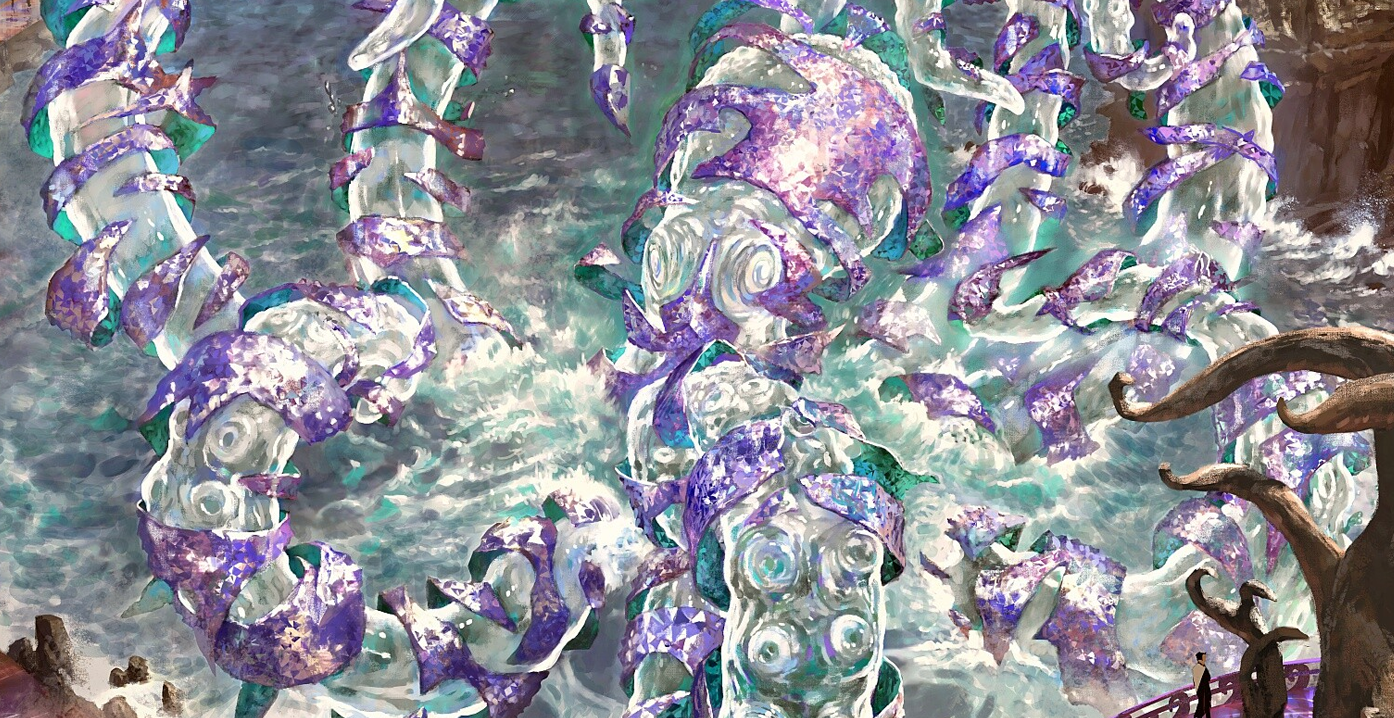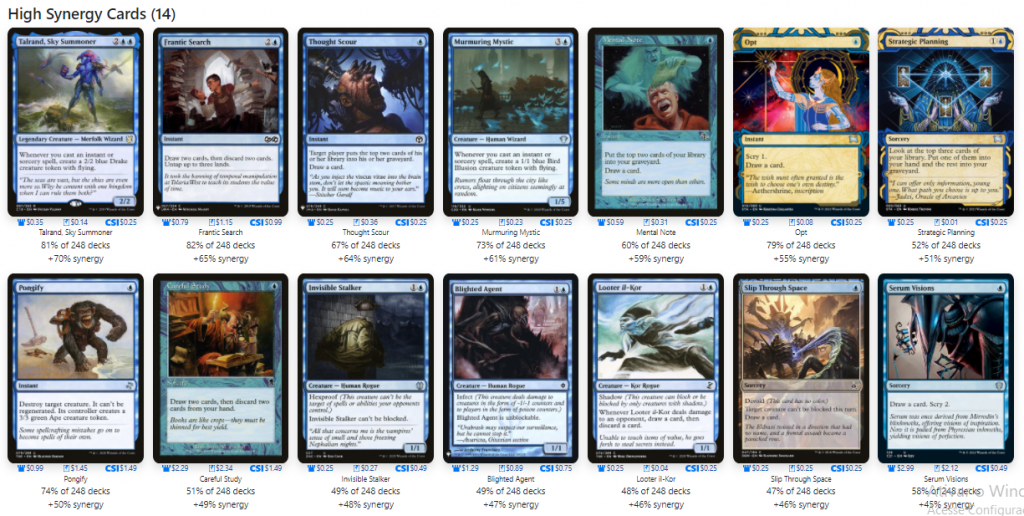Epic Experiment - Octavia Group Hug

(Octavia, Living Thesis | Art by Simon Dominic)
Epic Preparation
Hello, EDHREC fans! I’m Bernardo Melibeu, and this is Epic Experiment, a series where we throw all common sense aside and experiment with some unusual strategies, changing how we normally build our deck. Is it going to work? Who knows?! We’re making science here. When you’re an Izzet mage, blowing things up is half the fun.
In this article, let's talk about one very powerful yet underplayed tempo commander: Octavia, Living Thesis.
Observation 1
Octavia is quite the powerhouse! She's exactly what the doctor ordered: a solid tempo commander who offers a cheap aggressive body that can pump other creatures.
Observation 2
While the cost reduction really turns Octavia into a viable tempo commander, it's not as easy as one might think. By playing a fast deck, we need to get our commander online ASAP, but requiring eight instants/sorceries in the 'yard can slow us down quite a lot.
Observation 3
It's a shame that there aren't enough Infect creatures to build a proper mono-blue Infect deck, but they are a nice alternative win condition to have against lifegain decks, since Octavia can buff them up so well.
Observation 4
Octavia's Ward means we're covered against most forms of spot removal, barring counterspells. This makes us a lot safer, since board wipes are far less common than single-target removal.
Observation 5
Octavia's ability can target any creature, not just ours.
The Old Formula
As we can see, a lot of folks use Octavia as a way to pump up cheap, evasive bodies, such as Looter Il-Kor, to play a tempo game against the opposition. This makes the deck even more reliant upon getting those eight instants/sorceries in the graveyard, since these critters don't exactly end a game without our commander buffing them up. However, because these are taking up spell slots, it gets even trickier to fill the graveyard in the first place! This increases the importance of looting and mill effects to get our commander online as soon as possible.
The Epic Ingredients
Most folks think about Octavia's Magecraft trigger as an opportunity to pump cheap evasive bodies, but one thing that always let me down about this strategy was its play pattern. There's so much setup here: we need to fill the graveyard with instants or sorceries, put small creatures into play, then we can cast our commander, then cast a spell to trigger the Magecraft, and after all that, we can finally attack with a beefed-up creature. This is a lot of set up for a tempo-oriented shell that relies so heavily on their commander.
What if we could make our opponents do the job for us, and, thus, solely relying on them to help get our commander online more consistently? How, you ask? By using our Magecraft triggers as political tools to incentivize our opponents to attack each other!
That's right, it's Octavia Group Hug time. Group Hugs are even better when your commander has eight arms! Octavia's ability can work on any creature, not just ours. If we give favors to our opponents, we can empower their creatures to take each other down. The best part about this political strategy is that it becomes much easier to close games out (and avoid kingmaking scenarios). After all, our commander can turn any leftover token into a late-game threat.
That being said, we still need some ways to show our opponents that we're not a threat. We do this by being the friendliest person on the table, either by drawing everyone cards with things like Folio of Fancies, Horn of Greed, and Dictate of Kruphix, or by providing some additional bonus for our presence, like Pendant of Prosperity, or Tempting Contract. While these effects might make it seem like we're not actually trying to win, all of those effects are crucial for our own gameplan, because we need a stacked graveyard to reliably cast our commander.
Aside from that, we have some more indirect ways of "helping" our opponents. By giving everyone tokens (which we can pump with our commander), the game becomes a lot bloodier, which works great for us because it softens our opposition while placing everyone else in an aggressive position. Spite is a powerful tool.
Sometimes, players aren't willing to play ball. We have two main ways of dealing with them: the first is trying to convince the two other players to help us, but if that fails, there are always cards that deter our opponents from trying to take a swing at us. Crawlspace and Silent Arbiter completely stop go-wide decks, and our commander can help us cover bigger creatures. Propaganda and Dissipation Field won't prevent strikes, but they do impose a small tax for attacking us, and couple that with the fact that we're accelerating everyone else and the losses might become too much to bear.
The Mixture
Our commander needs us to have a full graveyard, so we need a sufficient number of instants/sorceries to reliably cast her. Aside from that, it's also important to keep a steady flow of cards, both to get to that threshold and to keep triggering our commander's Magecraft. Cantrips are a great way to do this, as they allow us to cut a bit of lands and have a higher instants/sorceries count in our deck. It feels pretty good to cast an Opt for value that will also help turn someone else's unblocked 1/1 Thopter into a surprise 8/8!
The rest of the deck is dedicated to controlling the pace of the game, which is very important because we're accelerating combat steps, and we can't get drowned by our own gameplan. Mono-blue isn't always the best choice for combative matters, but we have plenty of tools to deal with troublesome creatures, and the combination of bounce effects and counterspells can cover the rest.
Methodology
For our opening hand, we are mostly looking for a way to get our commander's discount online and some of our group hug pieces. Our deck is filled with card draw, so we can be quite loose with opening hands as long as they are at least a bit functional. The most important ones are definitely Thought Scour or Curate effects, to filter our draws and get the ball rolling.
Our early game is all about developing, either by playing mana rocks, group hug pieces, or even digging for some of those with our cantrips. Unlike the standard tempo builds, we aren't in a hurry to get our commander out right away. We can take our time and wait for others to develop a board, so that when we do cast our commander, we actually have creature targets to pump up.
The mid-game is where things start getting more explosive. By this time we should have landed a Group Hug piece (such as a Temple Bell or Horn of Greed) and should be able to make small deals. Eliminate a mutual threat with a Reality Shift in exchange for pumping their double-striker. Give them the benefit of Ingenious Mastery to get them enough mana to deploy a powerful creature. Getting our commander online starts to become a priority at this point because it's the best way to do some damage.
By the late game, we should probably be looking to flip the switch and become the aggressor. By the later stage of the game, this won't be hard, because our commander will be a cheap Voltron threat. Not only that, but the mana base of this deck is loaded with lands that can turn into creatures! Inkmoth Nexus, Faerie Conclave, we can craft our own surprise lethal threats without taking spell slots in the deck by stuffing it with little creatures. Plus, the fact that our deck is chock full of so many cantrip effects means we'll come out way ahead if the game whittles down to a top-deck war, because we get to see a lot more cards than they do.
Epic Results
Octavia presents some deckbuilding considerations, especially when playing for instant-speed Magecraft triggers. But there are always other ways this commander could improve, and new lessons she could explore.
For example, if you don't want to rely upon creature lands, you could find room for a steady source of token production in the deck, especially ones that go under-the-radar and don't tip enemies off that you might be planning a big backstab. Alternatively, this deck could also invest more into control-switching effects like Wrong Turn, to help get enemies onto our side much faster. These also play rather nicely, because they help us fill our graveyard quota.
That’s it for this Epic Experiment! What do you think about this list? Do you have any questions about the deck? Which cards did you like? Which did you not? Was this Epic Experiment a success? Please let me know in the comments below!

EDHREC Code of Conduct